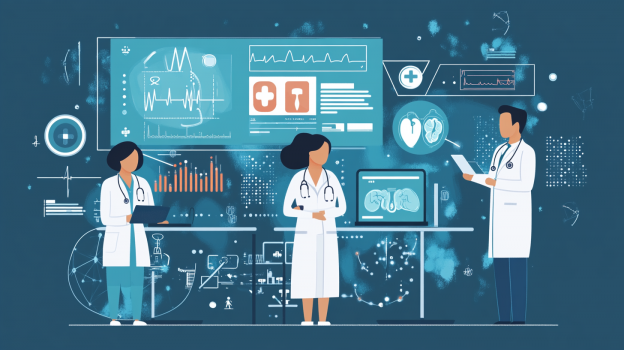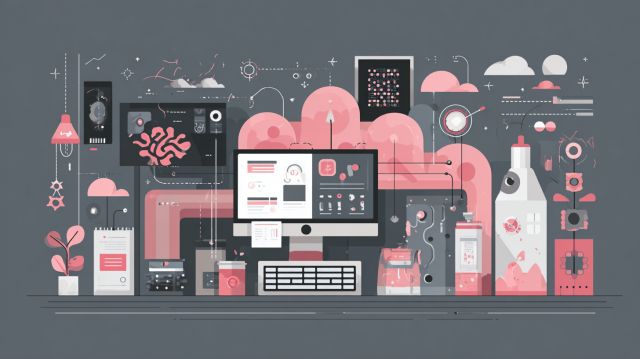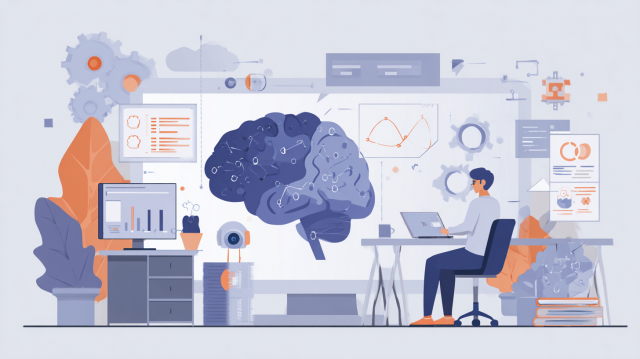
ChatGPT, which was made publicly available at the end of 2022, gained 100 million users in just two months, accelerating the social implementation of LLM (large language model) technology. Since then, LLMs have rapidly evolved to the point where they can handle specialized medical knowledge, reaching a level equivalent to passing the national medical examination.
On the other hand, Japan's healthcare system is facing serious challenges. With the arrival of 2025, the anticipated intensification of the "2025 problem" is expected. Various issues that have piled up in the healthcare field, such as the increase in medical demand due to the aging of the baby boomer generation, time constraints from reforms in doctors' working styles, a shortage of doctors in rural areas, and rising medical costs, are becoming more tangible.
Against this background, the Japanese government has made the utilization of AI in the medical field one of the key themes through the "AI Strategy 2022" and is working to promote digital transformation (DX). In particular, LLMs are expected to learn from vast amounts of medical literature and clinical data, providing effective support to healthcare professionals and patients through natural dialogue.
So, what kind of transformation will LLM bring to the medical field? In this article, we will introduce six innovative domestic initiatives at the forefront of medical x LLM.
Reference Links: Optimized prompts and GPT-4 enable ChatGPT to achieve passing scores on Japan's National Medical Examination!
The generative AI co-developed by Fast Doctor and Ortz reaches passing scores on the National Medical Examination, including taboo questions.
- Table of Contents
1. Potential Uses of LLM in the Medical Field
LLMs excel at deriving comprehensive judgments from complex long texts, creating summaries, and structuring data. They are also skilled at crafting polished writing from basic information. However, LLMs have a common issue known as 'hallucination,' where they present incorrect information as if it were accurate, making the assurance of reliability a crucial point for their utilization.
In the medical field, document tasks such as creating medical certificates, medical records, hospitalization treatment plans, and prescriptions are a significant burden for doctors. The medical industry is said to be a field where analog culture remains deeply rooted, but by leveraging the long text processing capabilities of LLMs, data structuring, and strengths in appropriate writing, there is potential to significantly streamline the document work that has been a burden for doctors. On the other hand, since the medical field requires a high level of information reliability, measures to mitigate one of the challenges of LLMs, known as 'hallucination', are essential. The use of LLMs is expected to become a powerful tool for providing efficient and high-quality medical services in an era where the demand for medical services continues to increase.
2. Six Examples of LLM Utilization in the Medical Field
Government-led Domestic Medical LLM Development / Cabinet Office SIP*1
●Purpose: Development of a domestic medical LLM aimed at improving the quality of medical practice and operational efficiency
●Research Institutions and Companies: National Institute of Informatics, University of Tokyo, Kyoto University, Kyushu University, and others
●Data Scale:
→High-Quality Medical Text: Approximately 20 billion characters
→Medical Images (CT, MRI, etc.): Approximately 520 million images
→Countermeasures for Hallucinations: Organizing data for RAG
●Application Fields: Clinical support, standardization of medical information, support for health administration, support for clinical research
*1 "Cabinet Office SIP": The Cabinet Office project "Strategic Innovation Creation Program (SIP)". A national project established to realize scientific and technological innovation that transcends the boundaries of ministries and traditional fields.
Utilization of Ubie's AI for Diverse Medical Operations / Ubie Corporation
●Business Efficiency: Reduced discharge summary creation time by 42.5%
●Reduced Psychological Burden: Decreased stress for healthcare professionals by 27%
●Multimodal Support: Utilizing Google Gemini for document, image, and audio processing
●Enhanced Security: Leveraging a closed environment to reduce the risk of information leakage
●Awards: Received both the Special Award and Excellence Award at the "Generative AI Grand Prize 2024*1"
*1 "GenAI Award 2024": A contest co-hosted by GenAI and Nikkei Business that recognizes outstanding use cases exploring the potential of generative AI in Japan.
Reference Link: Ubie Generative AI Ubie wins both the Special Award and the Excellence Award at the "Generative AI Awards 2024"
"Japan's first" medical LLM equipped medical records / NEC and Tohoku University Hospital
●Purpose: Utilizing large-scale language models (LLM) for electronic medical records
●Document Creation Support:
→ Automatic generation of medical documents (referral letters, discharge summaries, etc.)
→ Clearly indicating sources, allowing doctors to efficiently verify evidence
●Business Efficiency: Reducing doctors' document creation time by 47%
●Awards: Received the "7th Japan Open Innovation Award*1" Chairman's Award from the Japan Academy
*1 "Japan Open Innovation Award": This award recognizes initiatives that are expected to serve as role models for the future, with high leadership and originality, to further promote open innovation.
Reference Links: Overview of the 7th Japan Open Innovation Award Winning Initiatives and Projects (P14)
NEC Begins Sales of Electronic Medical Record System "MegaOak/iS" Equipped with Generative AI
NEC, Tohoku University Hospital, Hashimoto City Hospital Demonstrate the Effectiveness of LLM Utilization in Medical Settings for "Doctor Work Style Reform"
Safe LLM Learning Environment Compliant with Domestic Laws / NTT East Japan - Kanto Hospital
●Purpose: Safely manage medical information within the scope of domestic law and build an LLM learning environment
●Environmental Development:
→ Achieve a safe and low-latency learning environment while maintaining sensitive data within the hospital
→ Utilize the IOWN*1 infrastructure to verify local learning and inter-site communication
●Support for Medical Document Creation:
→ Utilize tsuzumi*2 to appropriately handle highly specialized medical terminology
→ Improve accuracy through prompt optimization, RAG, and LoRA tuning
*1 "IOWN": A concept for a next-generation information processing infrastructure capable of providing high-speed, large-capacity communication and vast computational resources.
*2 "tsuzumi": A large-scale language model (LLM) developed by NTT that is lightweight yet possesses world-class Japanese processing capabilities. Commercial availability will begin in March 2024.
Demonstrating the Effectiveness of LLM Utilization for Streamlining Clinical Trial Patient Registration / NEC and Tohoku University Hospital
●Purpose: Aiming to eliminate drag lag and drag loss*1, and to streamline clinical trial patient registration
●Usage:
→ The LLM analyzes electronic medical record information, organizing disease names, symptoms, health status, and treatment history
→ Automatically extracts candidate patients by matching with clinical trial conditions
●Results:
→ Extracts patients with higher accuracy than before, contributing to the reduction of burden on medical sites
*1 "Drag Lag Loss": Drag lag refers to the time difference until a drug used overseas is approved in Japan, while drug loss refers to the situation where a drug that has been approved overseas is not developed and cannot be used in Japan.
Achieving Efficiency in Clinical Trial Operations with Clinical Trial-Specific LLM / Fujitsu & Paradigm
●Purpose: Achieving efficiency in clinical trial operations for pharmaceutical companies
●Usage:
→ Automatically generate clinical trial-related documents
→ Convert existing documents into a data structure compliant with regulations
→ Support advanced processing for information retrieval, summarization, and translation
●Results:
→ 80% of documents automatically created
→ 50% reduction in creation time
Reference Link: Building an ecosystem to accelerate the digitization of clinical trials towards eliminating drug loss in Japan
3. Summary
We introduced examples of the use of LLMs in the medical field within Japan. Government-led domestic medical LLM development and various initiatives by private companies are progressing, and concrete results are beginning to emerge, such as the automatic generation of medical documents and the streamlining of clinical trial patient registration. Additionally, various measures are being taken to address challenges in the use of LLMs, such as ensuring the confidentiality and accuracy of medical information and countering hallucinations, including the establishment of a safe learning environment compliant with domestic laws and ensuring reliability through experts.
The use of LLM in the medical field has just begun, but the intersection of medicine and LLM is evolving daily. With further technological innovations and practical applications in the future, it holds the potential to pave the way for solving a wide range of issues, such as providing better care and addressing disparities in community healthcare.
4. Human Science Medical Annotation Services
At Human Science, we have extensive experience in medical annotations that require high expertise, such as endoscopic surgery images, chest X-ray images, and abdominal CT images. We excel in creating reliable annotation data, including supervision by physicians, and in acquiring and accumulating the necessary know-how through trial work before project initiation, closely collaborating with our clients. If you would like to discuss the development and implementation strategies of optimal AI systems tailored to the scale and characteristics of medical institutions, or if you are looking for specialized support, please feel free to contact us.
●Extensive annotation experience in medical imaging
Our company has extensive experience in medical image annotation that requires skill transfer, such as surgical images and MRI images, which are of high difficulty and specialization. In addition to experienced project managers in medical image annotation projects, we also have many skilled workers, ensuring high-quality annotation even for projects that are complex, specialized, and require skill transfer.
●Support for physician supervision and annotations by physicians
It can be concerning to have only general workers perform all tasks. In such cases, we receive requests for supervision by a physician for certain check tasks. To meet these requests, we have further strengthened our physician supervision system, allowing us to handle more complex annotations. Additionally, even if you request annotations by physicians instead of general workers, our project managers will provide comprehensive management services, ensuring resource allocation, quality, and progress management.
●Resource management without using crowdsourcing
At Human Science, we do not use crowdsourcing. Instead, projects are handled by personnel who are contracted with us directly. Based on a solid understanding of each member's practical experience and their evaluations from previous projects, we form teams that can deliver maximum performance.
●Equipped with a security room in-house
Within our Shinjuku office at Human Science, we have secure rooms that meet ISMS standards. Therefore, we can guarantee security, even for projects that include highly confidential data. We consider the preservation of confidentiality to be extremely important for all projects. When working remotely as well, our information security management system has received high praise from clients, because not only do we implement hardware measures, we continuously provide security training to our personnel.
Supports not only annotation but also the creation and structuring of generative AI LLM datasets.
In addition to labeling for data organization and annotation for identification-based AI systems, Human Science also supports the structuring of document data for generative AI and LLM RAG construction. Since our founding, our primary business has been in manual production, and we can leverage our deep knowledge of various document structures to provide you with optimal solutions.

 Text Annotation
Text Annotation Audio Annotation
Audio Annotation Image & Video Annotation
Image & Video Annotation Generative AI, LLM, RAG Data Structuring
Generative AI, LLM, RAG Data Structuring
 AI Model Development
AI Model Development In-House Support
In-House Support For the medical industry
For the medical industry For the automotive industry
For the automotive industry For the IT industry
For the IT industry




























































































